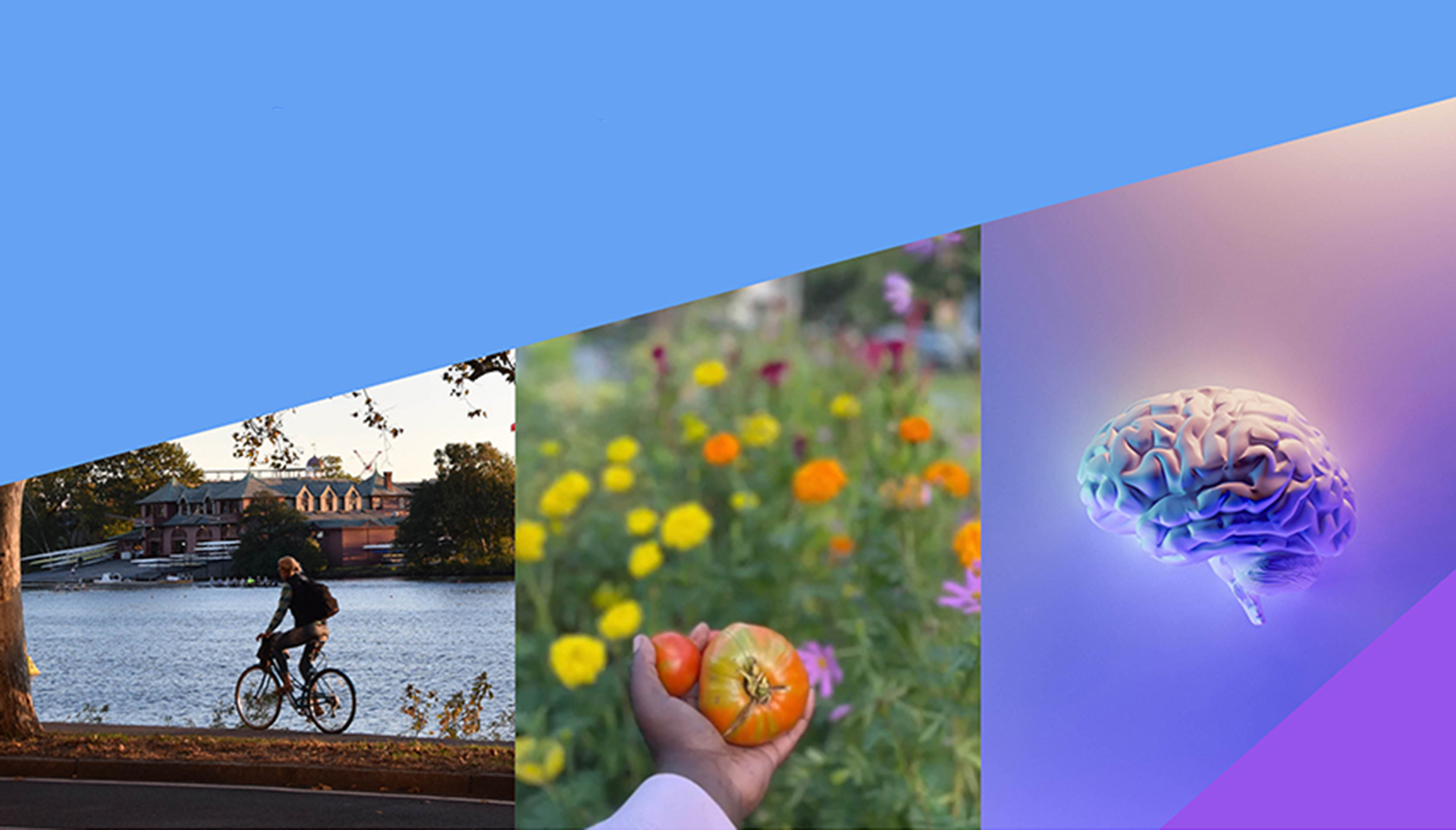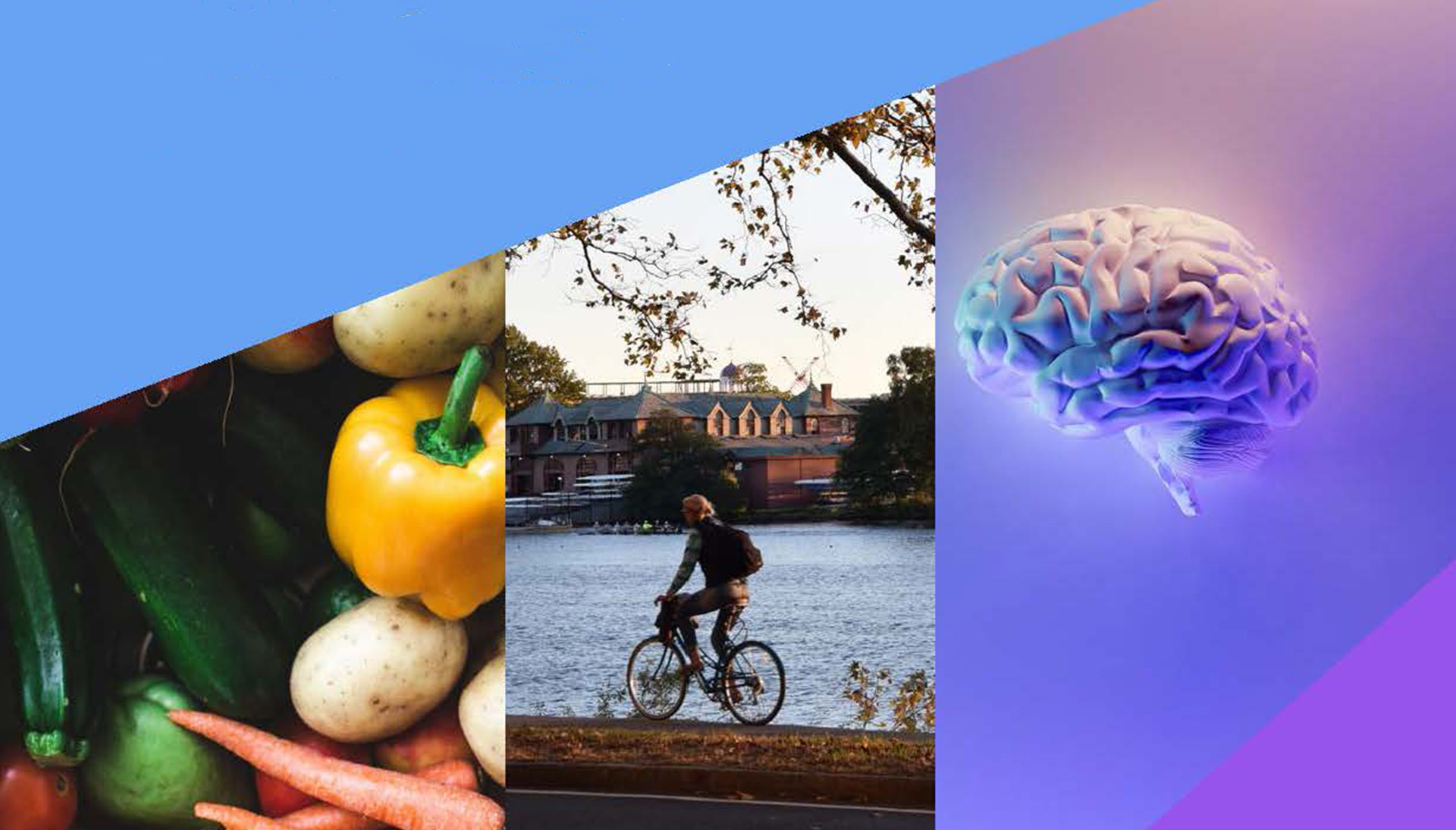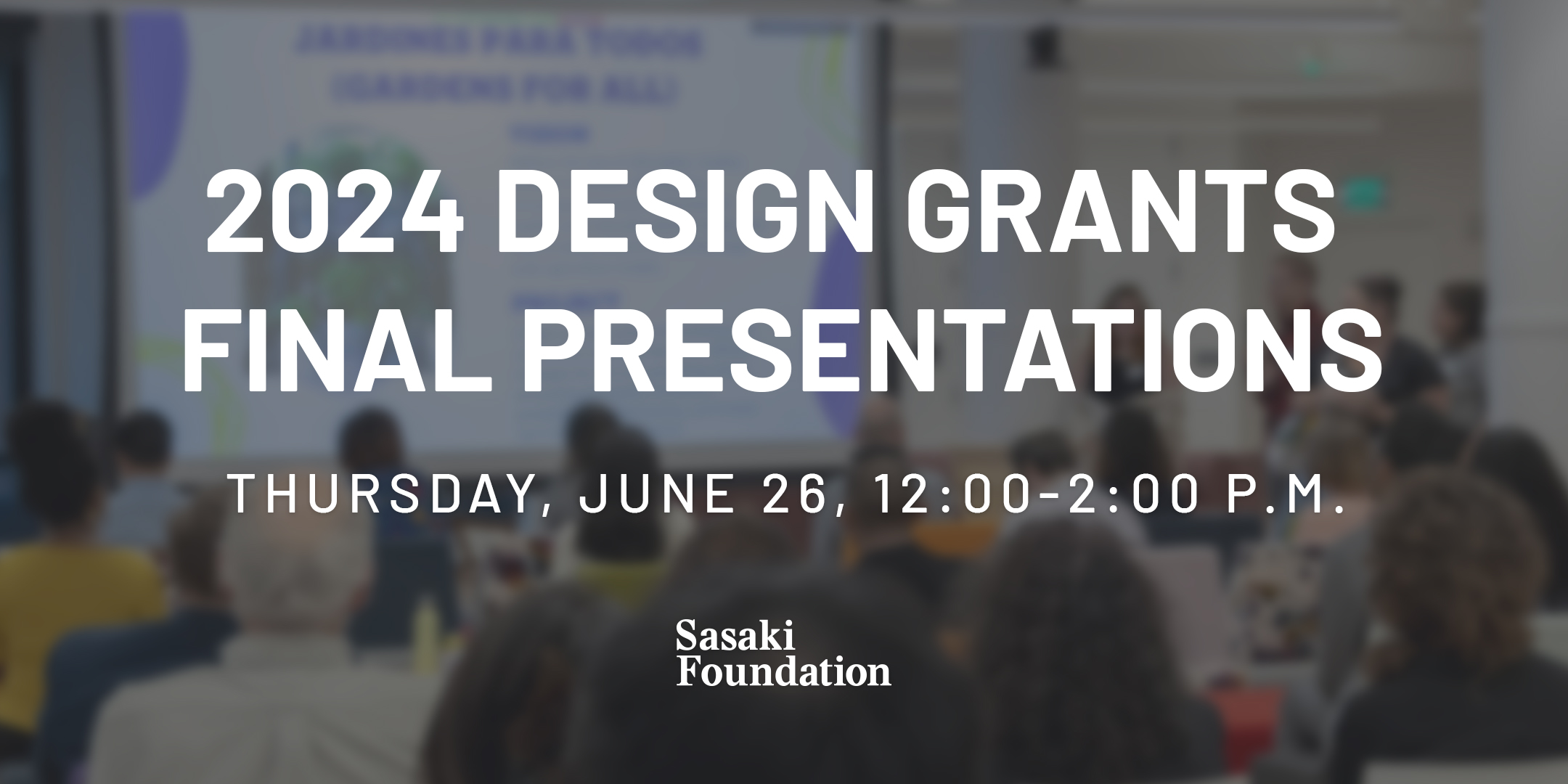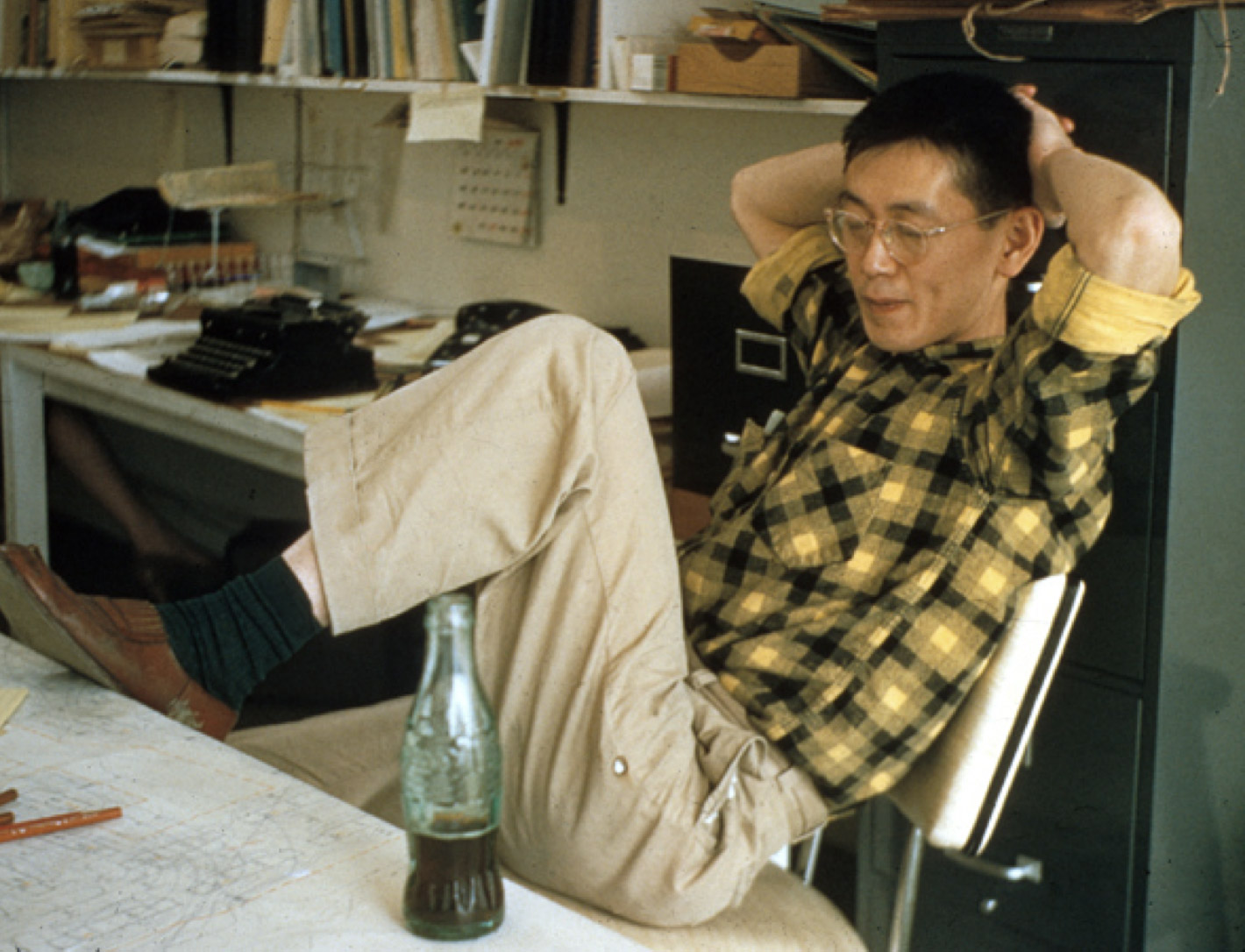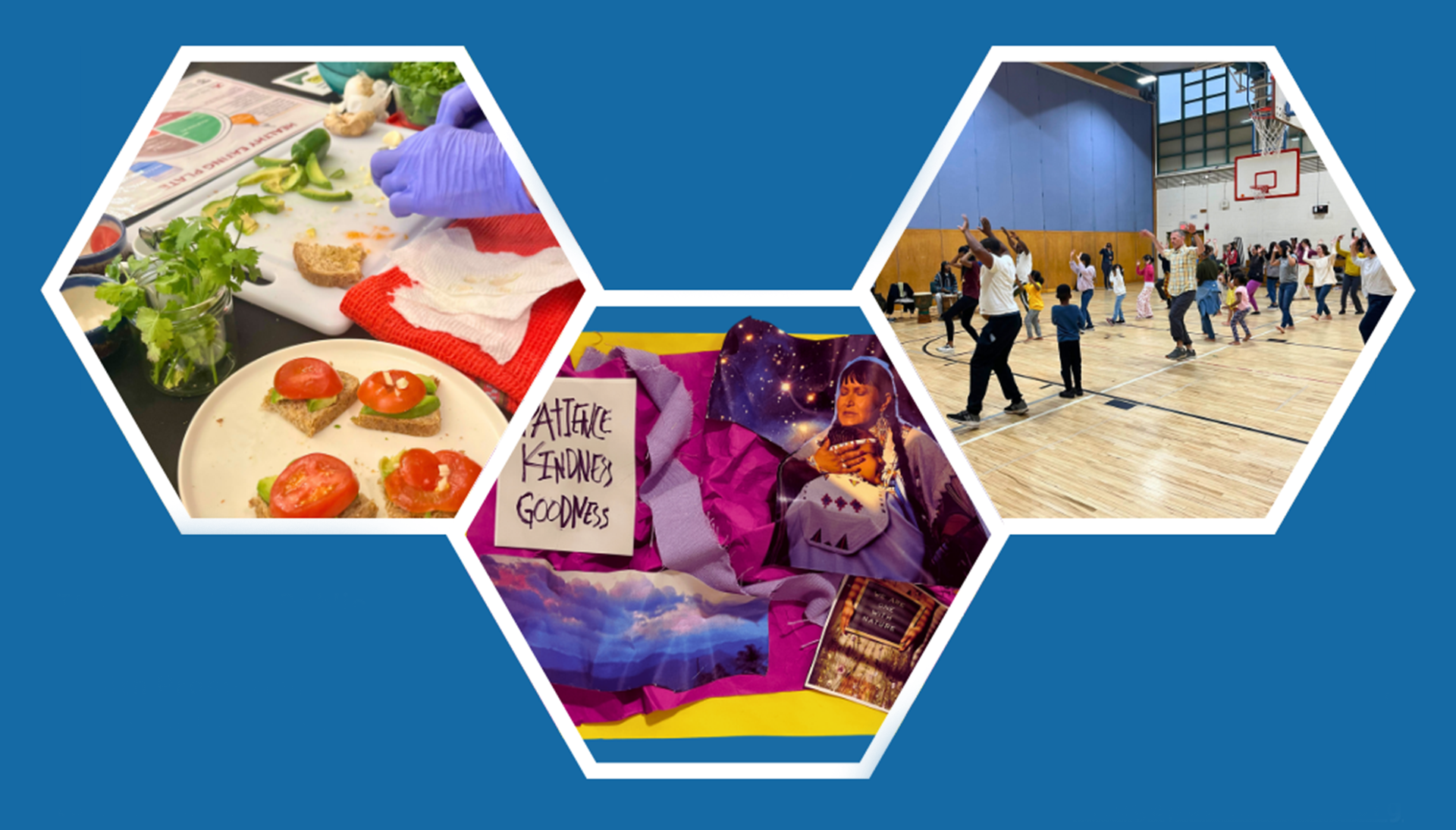The Cambridge Public Health Department (CPHD) 2024 Health Promotion Mini-Grant Program is now open for application! This program will award up to $20,000 in total funding to projects that promote healthy eating, physical activity, or youth mental health.
The Cambridge Public Health Department (CPHD) 2024 Health Promotion Mini-Grant Program is now open for application! This program will award up to $20,000 in total funding to projects that promote healthy eating, physical activity, or youth mental health.
The Cambridge Public Health Department’s Health Promotion Mini-Grant Program will award up to $25,000 in total funding to projects that promote healthy eating, physical activity, or youth mental health. Eligible groups for mini-grants include community organizations, schools, businesses, garden and farm programs, and government agencies that serve Cambridge.
WP_Query Object
(
[query] => Array
(
[post_type] => Array
(
[0] => post
)
[post_status] => Array
(
[0] => publish
)
[posts_per_page] => 1
)
[query_vars] => Array
(
[post_type] => Array
(
[0] => post
)
[post_status] => Array
(
[0] => publish
)
[posts_per_page] => 1
[error] =>
[m] =>
[p] => 0
[post_parent] =>
[subpost] =>
[subpost_id] =>
[attachment] =>
[attachment_id] => 0
[name] =>
[pagename] =>
[page_id] => 0
[second] =>
[minute] =>
[hour] =>
[day] => 0
[monthnum] => 0
[year] => 0
[w] => 0
[category_name] =>
[tag] =>
[cat] =>
[tag_id] =>
[author] =>
[author_name] =>
[feed] =>
[tb] =>
[paged] => 0
[meta_key] =>
[meta_value] =>
[preview] =>
[s] =>
[sentence] =>
[title] =>
[fields] =>
[menu_order] =>
[embed] =>
[category__in] => Array
(
)
[category__not_in] => Array
(
)
[category__and] => Array
(
)
[post__in] => Array
(
)
[post__not_in] => Array
(
)
[post_name__in] => Array
(
)
[tag__in] => Array
(
)
[tag__not_in] => Array
(
)
[tag__and] => Array
(
)
[tag_slug__in] => Array
(
)
[tag_slug__and] => Array
(
)
[post_parent__in] => Array
(
)
[post_parent__not_in] => Array
(
)
[author__in] => Array
(
)
[author__not_in] => Array
(
)
[search_columns] => Array
(
)
[ignore_sticky_posts] =>
[suppress_filters] =>
[cache_results] => 1
[update_post_term_cache] => 1
[update_menu_item_cache] =>
[lazy_load_term_meta] => 1
[update_post_meta_cache] => 1
[nopaging] =>
[comments_per_page] => 50
[no_found_rows] =>
[order] => DESC
)
[tax_query] => WP_Tax_Query Object
(
[queries] => Array
(
)
[relation] => AND
[table_aliases:protected] => Array
(
)
[queried_terms] => Array
(
)
[primary_table] => wp_posts
[primary_id_column] => ID
)
[meta_query] => WP_Meta_Query Object
(
[queries] => Array
(
)
[relation] =>
[meta_table] =>
[meta_id_column] =>
[primary_table] =>
[primary_id_column] =>
[table_aliases:protected] => Array
(
)
[clauses:protected] => Array
(
)
[has_or_relation:protected] =>
)
[date_query] =>
[request] => SELECT SQL_CALC_FOUND_ROWS wp_posts.ID
FROM wp_posts
WHERE 1=1 AND wp_posts.post_type = 'post' AND ((wp_posts.post_status = 'publish'))
ORDER BY wp_posts.post_date DESC
LIMIT 0, 1
[posts] => Array
(
[0] => WP_Post Object
(
[ID] => 236812
[post_author] => 2
[post_date] => 2025-06-18 08:00:25
[post_date_gmt] => 2025-06-18 12:00:25
[post_content] => [et_pb_section fb_built="1" module_class="mongo-image" _builder_version="4.27.0" background_image="https://www.sasakifoundation.org/wp-content/uploads/2025/06/2025-Design-Grants-Winners-scaled.jpg" global_colors_info="{}"][et_pb_row column_structure="1_8,3_4,1_8" module_class="mongo-image-with-text" _builder_version="4.16" background_size="initial" background_position="top_left" background_repeat="repeat" global_colors_info="{}"][et_pb_column type="1_8" _builder_version="4.16" custom_padding="|||" global_colors_info="{}" custom_padding__hover="|||"][/et_pb_column][et_pb_column type="3_4" _builder_version="4.16" custom_padding="|||" global_colors_info="{}" custom_padding__hover="|||"][et_pb_text admin_label="Header small text" module_class="slide-big" _builder_version="4.27.0" global_colors_info="{}"]June 18, 2025
[/et_pb_text][et_pb_text admin_label="Header big text" module_class="slide-white slide-massive-2 " _builder_version="4.27.0" custom_css_main_element="font-size:6vw;||line-height:6.2vw;" global_colors_info="{}"]Hideo Sasaki Foundation Announces Design Grants Winners
[/et_pb_text][/et_pb_column][et_pb_column type="1_8" _builder_version="4.16" custom_padding="|||" global_colors_info="{}" custom_padding__hover="|||"][/et_pb_column][/et_pb_row][/et_pb_section][et_pb_section fb_built="1" admin_label="Board of Trustees" module_class="padding-top-0" _builder_version="4.16" background_image="https://www.sasakifoundation.org/wp-content/uploads/2018/10/blog-background.png" background_size="initial" background_position="top_left" global_colors_info="{}"][et_pb_row column_structure="1_8,3_4,1_8" _builder_version="4.16" custom_margin="50px|||" global_colors_info="{}"][et_pb_column type="1_8" _builder_version="4.16" custom_padding="|||" global_colors_info="{}" custom_padding__hover="|||"][/et_pb_column][et_pb_column type="3_4" _builder_version="4.16" custom_padding="|||" global_colors_info="{}" custom_padding__hover="|||"][et_pb_text admin_label="Post Date" module_class="post-date" _builder_version="4.27.0" text_font="|600|||||||" text_text_color="#d59999" text_font_size="20px" text_letter_spacing="2px" text_line_height="24px" custom_margin="||20px|" text_font_size_last_edited="off|" global_colors_info="{}"]June 18, 2025
[/et_pb_text][et_pb_text admin_label="Post Title" _builder_version="4.27.0" text_font="|700|||||||" text_font_size="40px" text_line_height="48px" custom_margin="||50px|" global_colors_info="{}"]Hideo Sasaki Foundation Announces 2025 Design Grants Winners
[/et_pb_text][et_pb_text admin_label="Author" module_class="post-date" _builder_version="4.27.0" text_font="|600|||||||" text_text_color="#d59999" text_font_size="20px" text_letter_spacing="2px" text_line_height="24px" custom_margin="||20px|" text_font_size_last_edited="off|" global_colors_info="{}"]Anna Scherling
[/et_pb_text][et_pb_text module_class="body-text" _builder_version="4.27.0" global_colors_info="{}"]The Hideo Sasaki Foundation announced today the winning teams for our 2025 Design Grants. The Design Grants are an annual competition to showcase projects that promote equity and empower local communities in Greater Boston and the Massachusetts Gateway Cities.
Each year, the Hideo Sasaki Foundation announces research topics that address current trends and inequities in design. In 2025, we focused on Creative Community Building, New Models for Housing, Innovation in Transit and Access to Mobility Choices, Innovation in Health and Wellbeing, Proactive Approaches to Climate Adaptation, and New Uses for AI in Design, under the theme of Shared Voices: Charting a Course for Community Action. This theme recognizes that multiple futures are at stake, and we can make a difference by acting now.
“We were impressed by the response we received from applicants, our partners, and communities,” says Jennifer Lawrence, Executive Director. “The Hideo Sasaki Foundation is excited to fund innovative projects focused on bringing new, local solutions to global challenges affecting our communities, including food justice and spaces for youth.”
Applicants proposed projects to win cash awards and dedicated time with volunteer designers, primarily from Sasaki. In the program’s seventh year, the Hideo Sasaki Foundation received 20 applications from multi-member teams competing for the opportunity to take advantage of this unique relationship with Sasaki, a global design firm. The projects represented 40+ organizations and institutions, 8 Boston communities, 2 Greater Boston cities, 3 Massachusetts Gateway Cities, and multiple proposals focusing on Greater Boston.
The 2025 Design Grants jury selected eight teams to advance to Pitch Night, which took place on May 29 at 110 Chauncy, the Hideo Sasaki Foundation's home in Downtown Boston. Each team had the opportunity to pitch their ideas in front of 85+ designers, planners, artists, community leaders, civic leaders, and entrepreneurs. (Watch the recording of the event on YouTube.)
Following Pitch Night, the jury, along with the Hideo Sasaki Foundation Board of Trustees, selected three teams to receive the 2025 Design Grants. All finalist teams receive a $500 speaker stipend for their participation at Pitch Night.
“We had a fantastic jury, representing a wide range of life experiences and Boston-area organizations: Turner Construction Company, New Urban Mechanics Labs, the Boston Food Forest Coalition, Metropolitan Area Planning Council, and Sasaki, who evaluated the teams on the design, equity, inclusion, innovation, and impact of their ideas,” says Timothy Gale, Jury Chair and Hideo Sasaki Foundation Trustee. “We’re excited to welcome our 2025 Design Grants teams and support them as they work on projects that will empower communities within Massachusetts.”
The names of the 2025 Design Grants winners are as follows:
Culinary Commons
Community: Dorchester
Focus Area: Creative Community Building
Culinary Commons from EquiTable Food Systems is an initiative focused on establishing public kitchens as essential community infrastructure to foster food justice and social cohesion in urban areas like Boston. These sites serve as more than just cooking spaces; they are platforms for social change, enabling individuals to connect with their culinary heritage and build community ties. By addressing the lack of accessible venues for food-related gatherings, the team aims to create spaces where people can share meals, engage in culinary activities, and organize for food justice.
The jury appreciated the civic infrastructure project is scalable and replicable. They called the project a novel idea, appreciating how kitchens as civic infrastructure could bring communities together. They also recognized the project as scalable and replicable, expanding its impact.
Roxbury Food Truck Park
Community: Roxbury
Focus Area: Creative Community Building
CommonWealth Kitchen is excited to partner with the City of Boston, Madison Park Development Corporation, and the community to launch the Roxbury Food Truck Park. Roxbury, one of Boston’s historically underserved communities, has limited access to diverse and affordable food options. This initiative will transform underutilized public space along Malcolm X Boulevard to establish a food truck park, increasing access to healthy, culturally inclusive foods while creating economic opportunities for local entrepreneurs.
The jury appreciated the focus on activating, engaging, and connecting the community for the community, by the community. They also noted the project has potential for a big impact and replication in other communities.
SHADE
Community: Cambridge
Focus Area: Creative Community Building
SHADE is temporary, teen-led public art in public parks for public health. Over the next year, the team hopes to transition from a grant-funded organization to a teen-led earned income non-profit by further developing, open-sourcing, and leasing their product, SHADE. SHADE is a safe, affordable, temporary outdoor building system. Their mission is to empower regional teen teams and communities, like theirs, to address the teen mental health crisis by creating new destinations in public parks for teens to hang out, find friends, and make new ones in real life.
The jury appreciated how this youth led project empowers youth to change their environment and is teen focused. They recognized the project’s potential to grow capacity for youth to design and build solutions and explore civic engagement.
For more information, visit the 2025 Winners page.
A special thanks to our 2025 jurors for all their time and effort supporting the Design Grants program this year: Timothy Gale, Jury Chair, of Sasaki, Eudad Gonzalez of Turner Construction Company, Nigel Jacob of New Urban Mechanics Labs, Liz Luc Clowes of the Boston Food Forest Coalition, and Julia Wallerce of the Metropolitan Area Planning Council.
[/et_pb_text][/et_pb_column][et_pb_column type="1_8" _builder_version="4.16" custom_padding="|||" global_colors_info="{}" custom_padding__hover="|||"][/et_pb_column][/et_pb_row][et_pb_row column_structure="1_8,3_4,1_8" _builder_version="4.16" use_background_color_gradient="on" background_image="https://www.sasakifoundation.org/wp-content/uploads/2018/10/previous-post.png" custom_padding="100px||100px|" global_colors_info="{}"][et_pb_column type="1_8" _builder_version="4.16" custom_padding="|||" global_colors_info="{}" custom_padding__hover="|||"][/et_pb_column][et_pb_column type="3_4" _builder_version="4.16" custom_padding="|||" global_colors_info="{}" custom_padding__hover="|||"][et_pb_text admin_label="PREVIOUS POST" _builder_version="4.16" text_font="|600|||||||" text_font_size="20px" text_letter_spacing="2px" text_line_height="24px" global_colors_info="{}"]PREVIOUS POST
[/et_pb_text][et_pb_text admin_label="Previous Post Link" _builder_version="4.27.0" text_font="|700|||||||" text_font_size="40px" text_line_height="48px" custom_margin="50px|||" global_colors_info="{}"]2025 DESI interns complete their community projects
[/et_pb_text][/et_pb_column][et_pb_column type="1_8" _builder_version="4.16" custom_padding="|||" global_colors_info="{}" custom_padding__hover="|||"][/et_pb_column][/et_pb_row][/et_pb_section]
[post_title] => Hideo Sasaki Foundation Announces 2025 Design Grants Winners
[post_excerpt] => The Hideo Sasaki Foundation announced today the winning teams for our 2025 Design Grants. The Design Grants are an annual competition to showcase projects that promote equity and empower local communities in Greater Boston and the Massachusetts Gateway Cities.
[post_status] => publish
[comment_status] => open
[ping_status] => open
[post_password] =>
[post_name] => sasaki-foundation-announces-2025-design-grants-winners
[to_ping] =>
[pinged] =>
[post_modified] => 2025-06-18 10:13:34
[post_modified_gmt] => 2025-06-18 14:13:34
[post_content_filtered] =>
[post_parent] => 0
[guid] => https://www.sasakifoundation.org/?p=236812
[menu_order] => 0
[post_type] => post
[post_mime_type] =>
[comment_count] => 0
[filter] => raw
)
)
[post_count] => 1
[current_post] => -1
[before_loop] =>
[in_the_loop] =>
[post] => WP_Post Object
(
[ID] => 236812
[post_author] => 2
[post_date] => 2025-06-18 08:00:25
[post_date_gmt] => 2025-06-18 12:00:25
[post_content] => [et_pb_section fb_built="1" module_class="mongo-image" _builder_version="4.27.0" background_image="https://www.sasakifoundation.org/wp-content/uploads/2025/06/2025-Design-Grants-Winners-scaled.jpg" global_colors_info="{}"][et_pb_row column_structure="1_8,3_4,1_8" module_class="mongo-image-with-text" _builder_version="4.16" background_size="initial" background_position="top_left" background_repeat="repeat" global_colors_info="{}"][et_pb_column type="1_8" _builder_version="4.16" custom_padding="|||" global_colors_info="{}" custom_padding__hover="|||"][/et_pb_column][et_pb_column type="3_4" _builder_version="4.16" custom_padding="|||" global_colors_info="{}" custom_padding__hover="|||"][et_pb_text admin_label="Header small text" module_class="slide-big" _builder_version="4.27.0" global_colors_info="{}"]June 18, 2025
[/et_pb_text][et_pb_text admin_label="Header big text" module_class="slide-white slide-massive-2 " _builder_version="4.27.0" custom_css_main_element="font-size:6vw;||line-height:6.2vw;" global_colors_info="{}"]Hideo Sasaki Foundation Announces Design Grants Winners
[/et_pb_text][/et_pb_column][et_pb_column type="1_8" _builder_version="4.16" custom_padding="|||" global_colors_info="{}" custom_padding__hover="|||"][/et_pb_column][/et_pb_row][/et_pb_section][et_pb_section fb_built="1" admin_label="Board of Trustees" module_class="padding-top-0" _builder_version="4.16" background_image="https://www.sasakifoundation.org/wp-content/uploads/2018/10/blog-background.png" background_size="initial" background_position="top_left" global_colors_info="{}"][et_pb_row column_structure="1_8,3_4,1_8" _builder_version="4.16" custom_margin="50px|||" global_colors_info="{}"][et_pb_column type="1_8" _builder_version="4.16" custom_padding="|||" global_colors_info="{}" custom_padding__hover="|||"][/et_pb_column][et_pb_column type="3_4" _builder_version="4.16" custom_padding="|||" global_colors_info="{}" custom_padding__hover="|||"][et_pb_text admin_label="Post Date" module_class="post-date" _builder_version="4.27.0" text_font="|600|||||||" text_text_color="#d59999" text_font_size="20px" text_letter_spacing="2px" text_line_height="24px" custom_margin="||20px|" text_font_size_last_edited="off|" global_colors_info="{}"]June 18, 2025
[/et_pb_text][et_pb_text admin_label="Post Title" _builder_version="4.27.0" text_font="|700|||||||" text_font_size="40px" text_line_height="48px" custom_margin="||50px|" global_colors_info="{}"]Hideo Sasaki Foundation Announces 2025 Design Grants Winners
[/et_pb_text][et_pb_text admin_label="Author" module_class="post-date" _builder_version="4.27.0" text_font="|600|||||||" text_text_color="#d59999" text_font_size="20px" text_letter_spacing="2px" text_line_height="24px" custom_margin="||20px|" text_font_size_last_edited="off|" global_colors_info="{}"]Anna Scherling
[/et_pb_text][et_pb_text module_class="body-text" _builder_version="4.27.0" global_colors_info="{}"]The Hideo Sasaki Foundation announced today the winning teams for our 2025 Design Grants. The Design Grants are an annual competition to showcase projects that promote equity and empower local communities in Greater Boston and the Massachusetts Gateway Cities.
Each year, the Hideo Sasaki Foundation announces research topics that address current trends and inequities in design. In 2025, we focused on Creative Community Building, New Models for Housing, Innovation in Transit and Access to Mobility Choices, Innovation in Health and Wellbeing, Proactive Approaches to Climate Adaptation, and New Uses for AI in Design, under the theme of Shared Voices: Charting a Course for Community Action. This theme recognizes that multiple futures are at stake, and we can make a difference by acting now.
“We were impressed by the response we received from applicants, our partners, and communities,” says Jennifer Lawrence, Executive Director. “The Hideo Sasaki Foundation is excited to fund innovative projects focused on bringing new, local solutions to global challenges affecting our communities, including food justice and spaces for youth.”
Applicants proposed projects to win cash awards and dedicated time with volunteer designers, primarily from Sasaki. In the program’s seventh year, the Hideo Sasaki Foundation received 20 applications from multi-member teams competing for the opportunity to take advantage of this unique relationship with Sasaki, a global design firm. The projects represented 40+ organizations and institutions, 8 Boston communities, 2 Greater Boston cities, 3 Massachusetts Gateway Cities, and multiple proposals focusing on Greater Boston.
The 2025 Design Grants jury selected eight teams to advance to Pitch Night, which took place on May 29 at 110 Chauncy, the Hideo Sasaki Foundation's home in Downtown Boston. Each team had the opportunity to pitch their ideas in front of 85+ designers, planners, artists, community leaders, civic leaders, and entrepreneurs. (Watch the recording of the event on YouTube.)
Following Pitch Night, the jury, along with the Hideo Sasaki Foundation Board of Trustees, selected three teams to receive the 2025 Design Grants. All finalist teams receive a $500 speaker stipend for their participation at Pitch Night.
“We had a fantastic jury, representing a wide range of life experiences and Boston-area organizations: Turner Construction Company, New Urban Mechanics Labs, the Boston Food Forest Coalition, Metropolitan Area Planning Council, and Sasaki, who evaluated the teams on the design, equity, inclusion, innovation, and impact of their ideas,” says Timothy Gale, Jury Chair and Hideo Sasaki Foundation Trustee. “We’re excited to welcome our 2025 Design Grants teams and support them as they work on projects that will empower communities within Massachusetts.”
The names of the 2025 Design Grants winners are as follows:
Culinary Commons
Community: Dorchester
Focus Area: Creative Community Building
Culinary Commons from EquiTable Food Systems is an initiative focused on establishing public kitchens as essential community infrastructure to foster food justice and social cohesion in urban areas like Boston. These sites serve as more than just cooking spaces; they are platforms for social change, enabling individuals to connect with their culinary heritage and build community ties. By addressing the lack of accessible venues for food-related gatherings, the team aims to create spaces where people can share meals, engage in culinary activities, and organize for food justice.
The jury appreciated the civic infrastructure project is scalable and replicable. They called the project a novel idea, appreciating how kitchens as civic infrastructure could bring communities together. They also recognized the project as scalable and replicable, expanding its impact.
Roxbury Food Truck Park
Community: Roxbury
Focus Area: Creative Community Building
CommonWealth Kitchen is excited to partner with the City of Boston, Madison Park Development Corporation, and the community to launch the Roxbury Food Truck Park. Roxbury, one of Boston’s historically underserved communities, has limited access to diverse and affordable food options. This initiative will transform underutilized public space along Malcolm X Boulevard to establish a food truck park, increasing access to healthy, culturally inclusive foods while creating economic opportunities for local entrepreneurs.
The jury appreciated the focus on activating, engaging, and connecting the community for the community, by the community. They also noted the project has potential for a big impact and replication in other communities.
SHADE
Community: Cambridge
Focus Area: Creative Community Building
SHADE is temporary, teen-led public art in public parks for public health. Over the next year, the team hopes to transition from a grant-funded organization to a teen-led earned income non-profit by further developing, open-sourcing, and leasing their product, SHADE. SHADE is a safe, affordable, temporary outdoor building system. Their mission is to empower regional teen teams and communities, like theirs, to address the teen mental health crisis by creating new destinations in public parks for teens to hang out, find friends, and make new ones in real life.
The jury appreciated how this youth led project empowers youth to change their environment and is teen focused. They recognized the project’s potential to grow capacity for youth to design and build solutions and explore civic engagement.
For more information, visit the 2025 Winners page.
A special thanks to our 2025 jurors for all their time and effort supporting the Design Grants program this year: Timothy Gale, Jury Chair, of Sasaki, Eudad Gonzalez of Turner Construction Company, Nigel Jacob of New Urban Mechanics Labs, Liz Luc Clowes of the Boston Food Forest Coalition, and Julia Wallerce of the Metropolitan Area Planning Council.
[/et_pb_text][/et_pb_column][et_pb_column type="1_8" _builder_version="4.16" custom_padding="|||" global_colors_info="{}" custom_padding__hover="|||"][/et_pb_column][/et_pb_row][et_pb_row column_structure="1_8,3_4,1_8" _builder_version="4.16" use_background_color_gradient="on" background_image="https://www.sasakifoundation.org/wp-content/uploads/2018/10/previous-post.png" custom_padding="100px||100px|" global_colors_info="{}"][et_pb_column type="1_8" _builder_version="4.16" custom_padding="|||" global_colors_info="{}" custom_padding__hover="|||"][/et_pb_column][et_pb_column type="3_4" _builder_version="4.16" custom_padding="|||" global_colors_info="{}" custom_padding__hover="|||"][et_pb_text admin_label="PREVIOUS POST" _builder_version="4.16" text_font="|600|||||||" text_font_size="20px" text_letter_spacing="2px" text_line_height="24px" global_colors_info="{}"]PREVIOUS POST
[/et_pb_text][et_pb_text admin_label="Previous Post Link" _builder_version="4.27.0" text_font="|700|||||||" text_font_size="40px" text_line_height="48px" custom_margin="50px|||" global_colors_info="{}"]2025 DESI interns complete their community projects
[/et_pb_text][/et_pb_column][et_pb_column type="1_8" _builder_version="4.16" custom_padding="|||" global_colors_info="{}" custom_padding__hover="|||"][/et_pb_column][/et_pb_row][/et_pb_section]
[post_title] => Hideo Sasaki Foundation Announces 2025 Design Grants Winners
[post_excerpt] => The Hideo Sasaki Foundation announced today the winning teams for our 2025 Design Grants. The Design Grants are an annual competition to showcase projects that promote equity and empower local communities in Greater Boston and the Massachusetts Gateway Cities.
[post_status] => publish
[comment_status] => open
[ping_status] => open
[post_password] =>
[post_name] => sasaki-foundation-announces-2025-design-grants-winners
[to_ping] =>
[pinged] =>
[post_modified] => 2025-06-18 10:13:34
[post_modified_gmt] => 2025-06-18 14:13:34
[post_content_filtered] =>
[post_parent] => 0
[guid] => https://www.sasakifoundation.org/?p=236812
[menu_order] => 0
[post_type] => post
[post_mime_type] =>
[comment_count] => 0
[filter] => raw
)
[comment_count] => 0
[current_comment] => -1
[found_posts] => 100
[max_num_pages] => 100
[max_num_comment_pages] => 0
[is_single] =>
[is_preview] =>
[is_page] =>
[is_archive] =>
[is_date] =>
[is_year] =>
[is_month] =>
[is_day] =>
[is_time] =>
[is_author] =>
[is_category] =>
[is_tag] =>
[is_tax] =>
[is_search] =>
[is_feed] =>
[is_comment_feed] =>
[is_trackback] =>
[is_home] => 1
[is_privacy_policy] =>
[is_404] =>
[is_embed] =>
[is_paged] =>
[is_admin] =>
[is_attachment] =>
[is_singular] =>
[is_robots] =>
[is_favicon] =>
[is_posts_page] =>
[is_post_type_archive] =>
[query_vars_hash:WP_Query:private] => 2f41fbf7381527b29021df633e096c63
[query_vars_changed:WP_Query:private] =>
[thumbnails_cached] =>
[allow_query_attachment_by_filename:protected] =>
[stopwords:WP_Query:private] =>
[compat_fields:WP_Query:private] => Array
(
[0] => query_vars_hash
[1] => query_vars_changed
)
[compat_methods:WP_Query:private] => Array
(
[0] => init_query_flags
[1] => parse_tax_query
)
)
